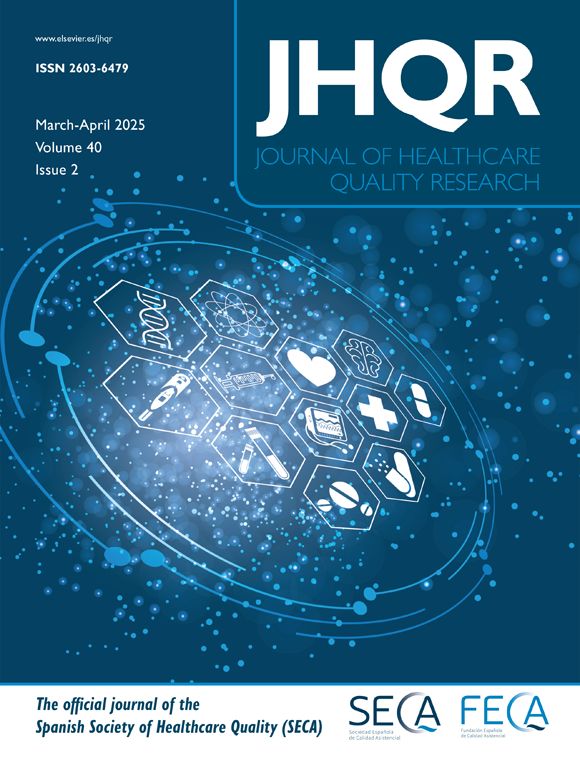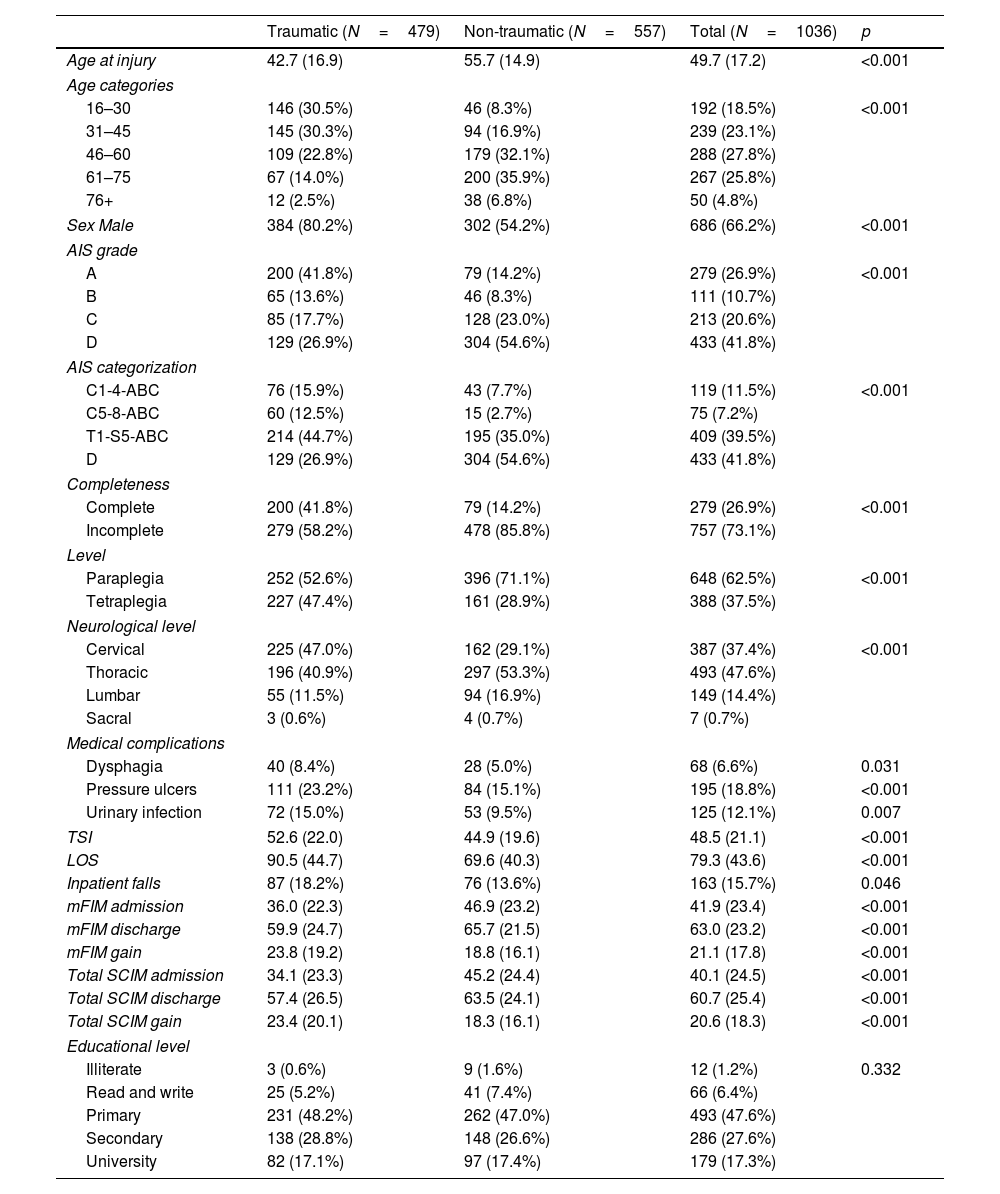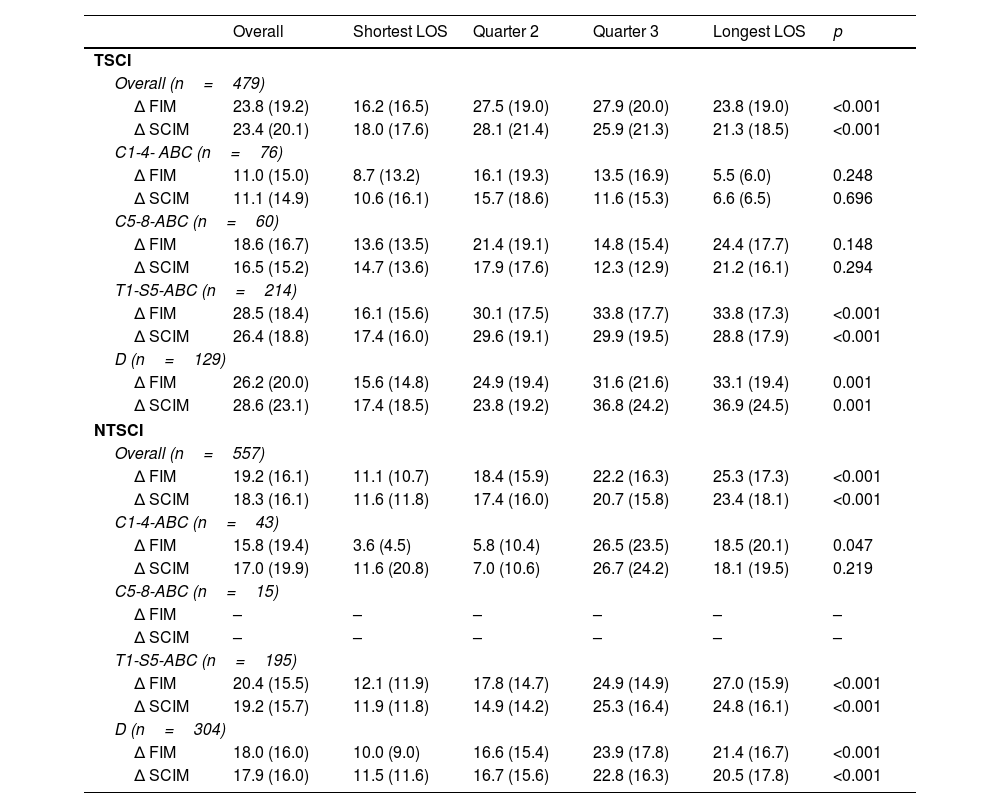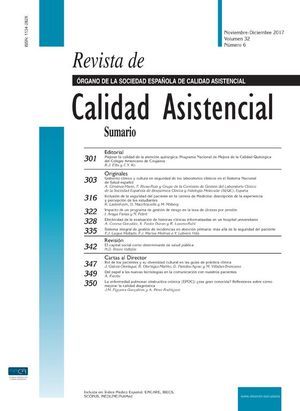Despite the importance of length of stay (LOS) following spinal cord injury, it remains underexplored in the literature. This study aims to bridge this gap by investigating the association between rehabilitation LOS and functional gains among patients with traumatic (TSCI) or non-traumatic (NTSCI) spinal cord injuries.
MethodsWe conducted a retrospective observational cohort study assessing functional gains using the motor Functional Independence Measure (mFIM) and the Spinal Cord Independence Measure (SCIM III) from rehabilitation admission to discharge. Outcomes were analyzed across four neurological categories based on the American Spinal Injury Association Impairment Scale (AIS): C1-C4 AIS A-C; C5-8 AIS A-C; T1-S5 AIS A-C; and AIS D. Linear regression models estimated changes across rehabilitation LOS quarters (Q1–Q4), adjusting for covariates.
ResultsWe included 1036 patients admitted for rehabilitation between 2007 and 2023 (46.3% TSCI, 53.7% NTSCI).
TSCI: age 42.7, 80.2% male, 41.8% AIS A, LOS 90.5.
NTSCI: age 55.7, 54.2% male, 14.2% AIS A, LOS 69.6.
For TSCI, mFIM and SCIM III gains increased significantly from Q1 to Q2 (T1-S5-ABC, n=214) and Q2 to Q3 (AIS D, n=129). For NTSCI, gains increased from Q2 to Q3 (T1-S5-ABC, n=195) and from Q1 to Q2 as well as from Q2 to Q3 (AIS D, n=304). Adjusted models showed decreasing gains for Q2 and Q3 vs. Q1 (TSCI) but increasing gains for Q2–Q4 vs. Q1 (NTSCI) for both measures. No significant gains were observed from Q3 to Q4.
ConclusionsWe identified specific neurological categories and LOS quarters yielding to significant functional gains.
A pesar de la importancia de la duración de la estancia hospitalaria (DEH) tras una lesión medular (LM), sigue siendo poco explorada en la literatura. Este estudio pretende llenar este vacío investigando la asociación entre la DEH en rehabilitación y las mejoras funcionales en pacientes con lesiones medulares traumáticas (LMT) o no traumáticas (LMNT).
MétodosRealizamos un estudio retrospectivo de cohortes evaluando las mejoras funcionales mediante la medida funcional de independencia motora (mFIM) y la medida de independencia de la médula espinal (SCIM III) desde la admisión hasta el alta en rehabilitación. Los resultados se analizaron en cuatro categorías neurológicas basadas en la escala de la Asociación Americana de Lesiones Medulares (AIS): C1-C4 AIS A-C; C5-8 AIS A-C; T1-S5 AIS A-C; y AIS D. Se utilizaron modelos de regresión lineal para estimar cambios en trimestres de DEH (Q1-Q4), ajustando por covariables.
ResultadosIncluimos a 1.036 pacientes admitidos entre 2007 y 2023 (46,3% LMT, 53,7% LMNT). En LMT, las mejoras en mFIM y SCIM III aumentaron significativamente de Q1 a Q2 (T1-S5-ABC, n=214) y de Q2 a Q3 (AIS D, n=129). En LMNT, aumentaron de Q2 a Q3 (T1-S5-ABC, n=195) y de Q1 a Q3 (AIS D, n=304). Los modelos ajustados mostraron disminución de ganancias en Q2 y Q3 frente a Q1 (LMT), pero un aumento en Q2-Q4 frente a Q1 (LMNT) en ambas medidas. No se observaron ganancias significativas de Q3 a Q4.
ConclusionesIdentificamos categorías neurológicas específicas y trimestres de DEH con mejoras funcionales significativas.












